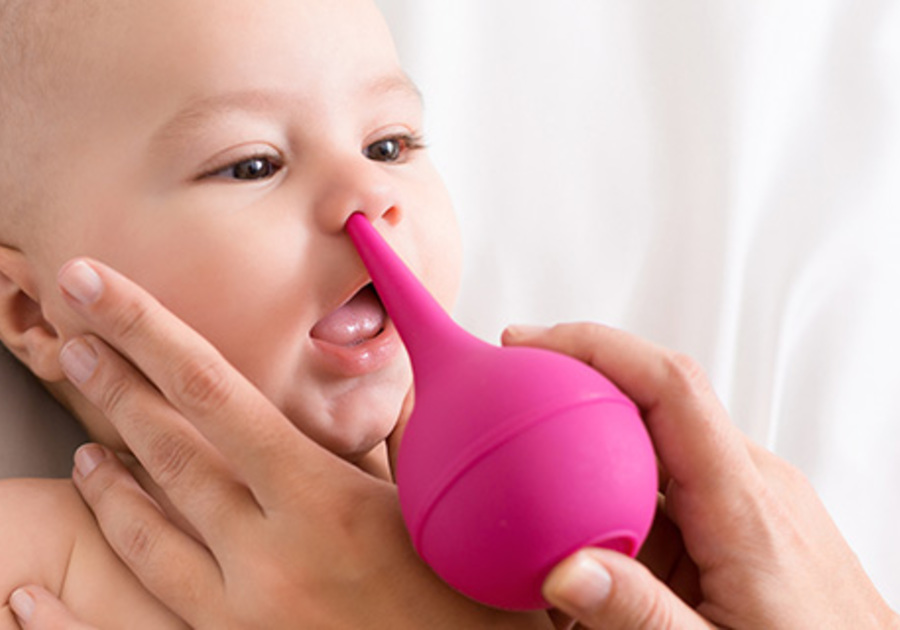A stuffy nose can make it difficult for your baby to breathe, which can make even the most experienced parent worry. Fortunately, there are a number of safe and effective treatments you can try at home so both you and your baby can breathe easier.
Suctioning Your Child’s Nose
Using a rubber suction bulb may upset your child for a few minutes, but they’ll feel better and breathe more easily once the mucus is cleared. You should suction your child’s nose any time they are having difficulty breathing or breathing noisily due to excess mucus.
Follow these steps for suctioning:
Squeeze one or two saline nose drops into each nostril to loosen any dried mucus. Use a rubber suction bulb to gently remove clogged mucus from both nostrils. Repeat as needed. Avoid saline solutions containing any medications.
Allow your child to recover and breathe between each suction attempt and gently wipe your child’s nose with a tissue as needed.
Try to limit suctioning to two to three times a day. Suctioning more often may cause the inside of the nose to dry out, become sore, and bleed.
When finished, clean the bulb syringe using a bowl of soapy water, pulling the soapy water into the bulb and squeezing it out. Let the bulb syringe air dry.
Use a separate bulb syringe for each of your children and discard after seven days.
Boost the Humidity
A vaporizer or humidifier that releases a cool mist into the air can help moisten nasal passageways. Make sure to place the device out of your baby’s reach but close enough for the mist to still reach your baby. Change the water every day to avoid mold and bacterial growth.
You may also want to try running a hot shower and sitting in the bathroom with your baby for a few minutes. This may also help loosen mucus and clear your baby’s sinuses.
Wipe it Away
And finally, simply wiping away excess mucus throughout the day that may be blocking your baby’s nostrils will help.
When to Call the Doctor
Sometimes, congestion may signal a more serious problem. Congestion caused by a cold can often be treated at home with some saline drops and a little TLC. If your child has a fever, call your pediatrician.



